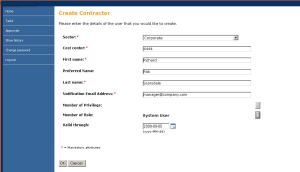(This post was written by Matt Pollicove)
One thing I’ve noticed when talking to people about Identity Management projects involves how to determine the project’s overall scope. “How do I scope this?” they will say to me. Now that’s kind of tough to answer right off the cuff, especially when considering Pollicove’s Law of Provisioning which basically says there’s no guarantee that companies that are in the same vertical will work the same way.
However, I think there are some best practices that can be worked with when considering implementing an Identity Management solution:
1. Make sure you have executive sponsorship. C-level support is going to be important in balancing the needs of your stakeholders and their budget dollars.
2. Make sure you have a good plan of what you want your Identity Management solution to cover. An essential part of this is conducting a thorough assessment. Document everything, diagram existing processes, then take them apart and put them back together the way they should be, then do it again. This should be done with a combination of internal and external sources. Internal resources know how current systems are configured and interact. External resources will offer an impartial assessment of how these systems can interact more efficiently. External resources will also be helpful in determining which Identity Management products will work best in your infrastructure.
3. When building your plan, know where you’re starting from. What will be used as your authoritative store? How will it be built?
4. Where are you going to? What will you provision to? What will you control access to?
5. How are you going from 2 to 3? How will you engineer your changes? What will the phases of your project consist of?
Item 4 is probably the most important part of the process. Many a project has suffered due to overreaching phase objectives. Carefully define what you want to achieve in each phase.
Data cleansing and analysis is almost always your first phase. If you don’t have clean data, you won’t have a clean project. Future phases can deal with:
· Creating an Authoritative Store
· Provisioning to essential systems
· Password management
· Role management
· Provisioning to secondary systems
· Etc.
So the big question is what order does this happen in? How long will it take? I always suggest attacking “low hanging fruit” first by attacking the easiest objectives that will show the biggest net gain? As a part of number 1 above, think about solving automation needs, compliance needs, addressing password management request costs to the helpdesk?
How long will it take? As long as it has to. This is going to be a major project that will affect many systems and departments. Take it slow and easy. Test it thoroughly and make sure there’s a good knowledge management/training initiative to let your users know what happening and how everyone will benefit. It’s never good if your users equate an Identity Management initiative with a foul tasting medicine. This includes your stakeholders.








